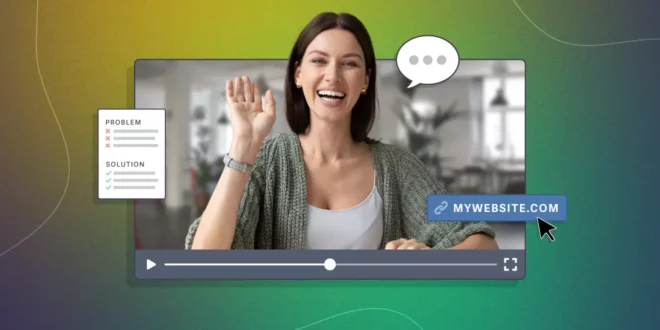Attention spans are short, especially online. A five-minute video should never feel like a chore to watch. But poor pacing, cluttered messages, or tedious visuals can make it seem endless. In explainer video production, crafting a quick yet effective piece requires precision. You can make every second count while keeping your audience engaged.
Here are some essential strategies to keep your videos crisp and engaging without making your viewers feel like they’re stuck in a time warp.
Engage with a Compelling Hook
The first few seconds of any video are crucial. You must grab the viewer’s attention immediately. Start with a powerful hook that sets the tone for the rest of the video. It could be a question, a surprising fact, or a bold statement.
Attention spans are short, especially online. A five-minute video should never feel like a chore to watch. But poor pacing, cluttered messages, or tedious visuals can make it seem endless. In explainer video production, that could be created with FastCut, crafting a quick yet effective piece requires precision.
Successful production ensures that each element is designed to capture attention immediately. Their approach to animated explainers can help turn complex concepts into something digestible.
Choose a Single Core Message
Every explainer video should focus on a central idea. One problem you solve. One concept you illustrate. One product you introduce. Trying to do too much will make it difficult for the viewer to keep up and lead to a loss of interest. When planning your explainer video production, isolate the key message that resonates most with your target audience. Ensure that everything in the video supports that singular idea.
Pacing ─ Avoid the Drag

Time drags in videos when the pacing is off. You must avoid letting your visuals or narration linger on one scene for too long. Keep it moving. Every second in your video must have purpose. Break your video into sections, each dedicated to driving a point home. Stick to the rhythm that keeps your viewer moving through the message without getting bored.
Changes in tone, visuals, or perspective add variety, helping to break up monotony. When the viewer feels that they’re progressing through the story at a comfortable speed, the video won’t feel like it’s dragging.
Visuals Matter More Than Words
Videos are, first and foremost, a visual medium. Relying too heavily on a long script or overly complex narration risks losing the audience’s attention. The beauty of an explainer video lies in its ability to show rather than tell. Use visuals that complement the core message, making it easier for the viewer to grasp.
If you’re explaining a process or a concept, find ways to represent each step through simple visuals or animations. Infographics, icons, or even motion graphics can quickly convey ideas that would otherwise require long explanations. Let your visuals do the heavy lifting, allowing your narration to take a backseat.
Keep Transitions Smooth
Jumping between topics or visuals without clear transitions can cause confusion. Your viewers need to follow along effortlessly. A good transition guides the viewer from one point to the next, seamlessly blending ideas. Choppy transitions can break the flow, which will make the video feel longer than it is.
Each transition should serve a purpose. Whether it’s a shift in the narrative or a change in visual perspective, it must be clear and intentional. Think of it like storytelling—each scene should naturally lead to the next.
Audio Complements the Message

Audio is often underutilized in video production. Sound can be just as important as visuals. Use audio cues to emphasize key points or to create mood shifts. A well-timed sound effect or music change can keep your audience more engaged without them even realizing it.
But remember—less is more. Overloading your video with too many audio effects or background music can distract from the message. The audio should support the visuals, not overpower them. Clarity is key.
Avoid Information Overload
One of the worst mistakes you can make is cramming too much information into your video. Remember, less is more. Keep your message focused and clear. Don’t overwhelm your audience with endless facts, figures, or data points. Stick to the essentials.
If you feel like you have too much information, it’s better to create multiple short videos than to dump everything into one. An overloaded video will quickly lose your viewer’s attention. Break it down and simplify.
A Strong Script Drives Success
A video’s success relies on a well-crafted script. But even a great script can turn into a lengthy monologue if not handled correctly. Keep it concise. Every line should serve a purpose. Avoid filler. A good rule of thumb is to cut any section that doesn’t directly add to the viewer’s comprehension of your core message.
Write as if you’re speaking to someone with no time to waste. A direct approach always resonates better than a long-winded one.
Think of the Viewer First

When crafting a five-minute explainer video, always put yourself in the shoes of your audience. Every choice—from the script to the visuals to the audio—should aim to enhance the viewer’s experience. Pacing is critical. A single message keeps it on track. Letting visuals take the lead helps simplify complex topics.
By focusing on these key strategies, your five-minute video will feel like a quick, engaging experience rather than a tedious marathon. Always prioritize the viewer’s attention, and you’ll avoid creating anything that feels like it’s dragging.
Keep Your Ending Impactful
The final moments of your video should leave a lasting impression. Your audience should walk away feeling they’ve gained something valuable. Whether it’s a call to action, a thought-provoking conclusion, or a recap of the key takeaway, ensure the ending reinforces the message.
Avoid weak or drawn-out endings that lose momentum. A strong finish not only helps with retention but also improves the chances of viewers sharing the video with others. Keep it brief, impactful, and tied to the purpose you set out to achieve.
 Imagup General Magazine 2024
Imagup General Magazine 2024



